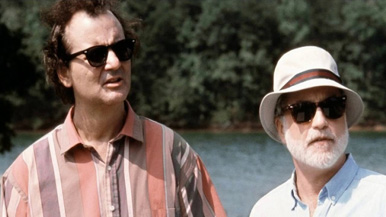The Number One Movie in America: What About Bob?
By Sean Collier
July 3, 2019
BoxOfficeProphets.com

Others just pick the right weekend.
Many box-office champions are born more out of a lack of competition than mass appeal. Such is the case with “What About Bob?,” a somewhat forgotten Bill Murray/Richard Dreyfuss comedy.
Released on May 17, 1991, “What About Bob?” — one of only four number-one movies with a question mark in the title (guess now, answers at the end of this article) — did not face stiff competition at the multiplex. The defending champion was action thriller “F/X 2,” a belated sequel to the 1986 original starring Bryan Brown and Brian Dennehy. Competing new releases include “Stone Cold,” a Razzie-nominated action flick starring Brian Bosworth (in the Boz’s acting debut), and comedy sequel “Mannequin Two: On the Move,” a real movie I assure you actually exists.
So a sleepy comedy with two legitimate stars had an easy path to the top of the box office, which “What About Bob?” won with just $9.2 million. It would be the lowest top-spot debut for five months — a tally which includes not only bona fide hits such as “Robin Hood: Prince of Thieves” ($25.6 million debut) and “Terminator 2: Judgment Day” ($31.7 million debut), but even the likes of “Freddy’s Dead: The Final Nightmare” ($12.9 million debut).
So it was a good weekend to be an agreeable comedy.
“What About Bob?” is carried, almost single-handedly, by a peak performance by Murray, whose work here is the equal of his turns in “Ghostbusters” or “Caddyshack.” He plays deeply phobic recluse Bob Wiley, whose beleaguered therapist dumps him on a successful colleague, Dr. Leo Marvin (Dreyfuss). Marvin, riding high on a successful self-help book and an upcoming network-TV appearance, takes on Wiley in good spirits, but quickly becomes unraveled as the patient begins following him around — all the way to the family vacation home in New Hampshire.
There are big set pieces, of course — yes, Wiley ends up upstaging the doctor’s “Good Morning America” appearance — but the best moments of the movie are, unsurprisingly, deadpan deliveries and subtle physical bits from Murray. The opening interview, wherein Wiley lists his symptoms for a solid minute (“dizzy spells, nausea, cold sweats, hot sweats, fever blisters, difficulty breathing, difficulty swallowing, blurred vision, involuntary trembling, dead hands, numb lips, fingernail sensitivity, pelvic discomfort”), is excellent.
It is a bit of a frustrating watch in that Dr. Marvin’s frustration is very relatable; after all, he does have a psychiatric patient not only invading his space, but ingratiating himself with the wife and kids. Dreyfuss’ performance is notable for displaying remarkably convincing frustration; years after the fact, Dreyfuss admitted that he couldn’t stand Murray, perhaps lending a note of authenticity to his exasperated performance.
Still, it’s a funny and breezy watch, and it hung around in the over-the-top summer of 1991. As counter-programming to the likes of “Backdraft” and “Point Break,” “What About Bob?” remained in theaters for eight weeks, grossing more than $63 million.
(The other inquisitive number-ones: ““Are We There Yet?” and “Why Did I Get Married?” There are probably others, but proper records of weekend box office results only date to 1982.) Note that although it seems like it should have a question mark, "Who Framed Roger Rabbit" purposefully omitted it (apparently because there is a superstition that a question mark in a movie title is the kiss of death).
“What About Bob?” is the subject of the latest episode of The Number One Movie in America, a look back at past box-office champions. Each episode’s film is drawn at random from a list of every number-one movie since 1982. Please listen and subscribe!
Next time: Neither the first nor the last — and neither the least nor the most successful — attempt to revitalize James Bond.